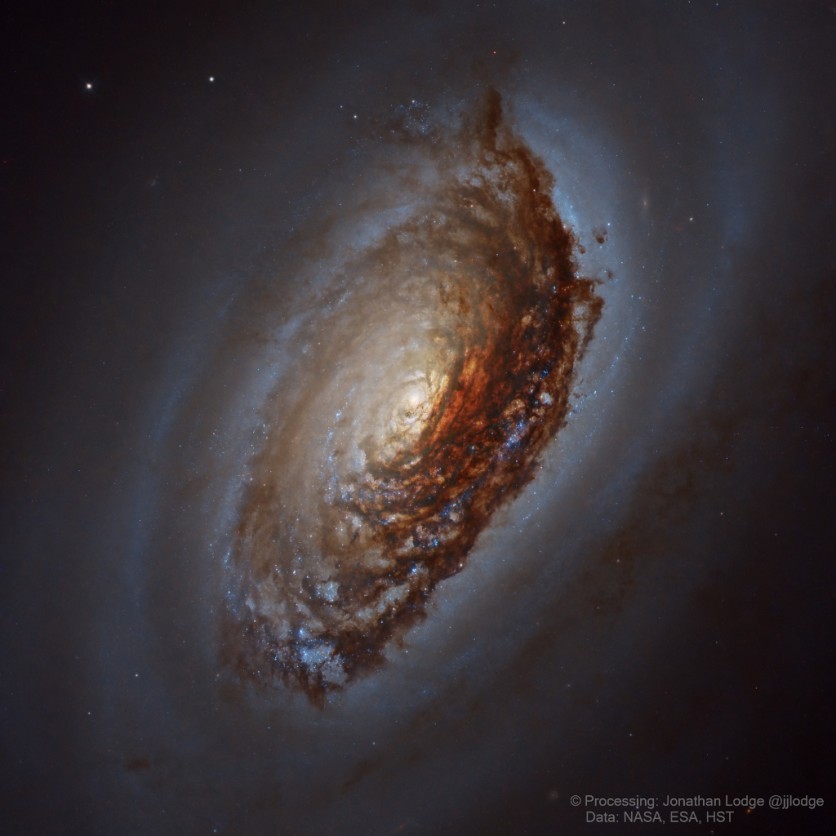In the vast expanse of the cosmos, a stunning spectacle awaits stargazers and space enthusiasts alike - the enigmatic Messier 64, also known as the Black Eye Galaxy or the Sleeping Beauty Galaxy.
This mesmerizing spiral galaxy has captured the attention of astronomers and space explorers, drawing them closer to unraveling its mysteries.

A Close-Up View of the Black Eye
Nestled within the northern constellation of Coma Berenices, approximately 17 million light-years away, the Black Eye Galaxy's dark-lidded appearance has earned it its intriguing monikers.
The Hubble Space Telescope provided a captivating close-up of the central region of M64, spanning an impressive 7,400 light-years across.
The image reveals a celestial dance of light and shadow, as enormous dust clouds veil parts of the galaxy's core. Within these obscured regions lie captivating secrets - young, vibrant star clusters with their radiant blue hues and the crimson glow of hydrogen gas, a hallmark of regions where stars are actively being born.
But there's more to M64's enigmatic beauty than meets the eye. In a mesmerizing twist of fate, astronomers have observed that this spiral marvel is composed of not one but two concentric, counter-rotating systems. The central region of M64 showcases a harmonious dance of stars and interstellar gas, all twirling in the same direction.
Yet, as we venture further outward, a startling revelation awaits - the gas in the outer reaches, stretching about 40,000 light-years, rotates in the opposite direction, defying cosmic norms.
Read Also : NASA Hubble Discovers Saturn's Ring System Heats Planet's Atmosphere-A Never-Before-Seen Phenomenon!
Cosmic Union
Astronomers believe that M64's striking features were forged through a momentous event in the galaxy's past - the collision and fusion of two separate galaxies. This cosmic union brought together disparate elements, resulting in the Black Eye Galaxy's distinct appearance and captivating dynamics.
The Hubble Space Telescope's reprocessed image has allowed astronomers and astrophysicists to delve deeper into the Black Eye Galaxy's history. As they peer through the celestial dust and unravel the secrets of M64's past, they gain invaluable insights into the cosmic forces that shape and mold galaxies.
In the vast cosmic tapestry, M64 stands as a testament to the intricacies and wonders of our universe. Its captivating features serve as a reminder of the immense power of celestial forces, shaping the galaxies that adorn the night sky.
Related Article : NASA's Hubble Space Telescope Captures 'Butterfly Nebula' In Stunning Motion | Fun Facts About This Beautiful Space Butterfly

ⓒ 2025 TECHTIMES.com All rights reserved. Do not reproduce without permission.




